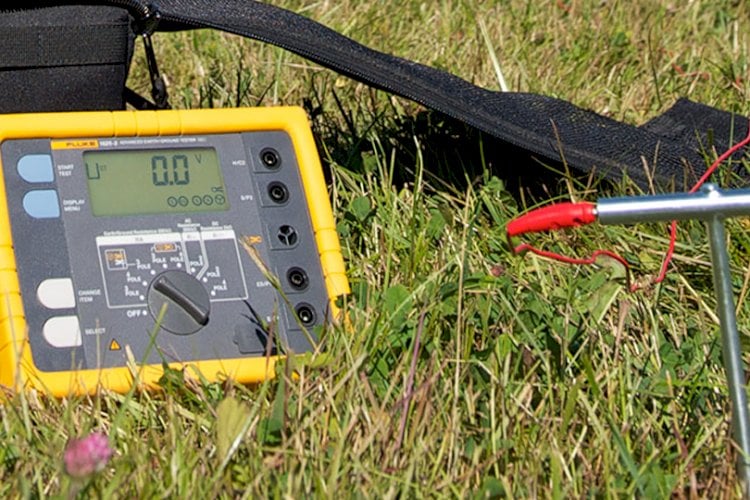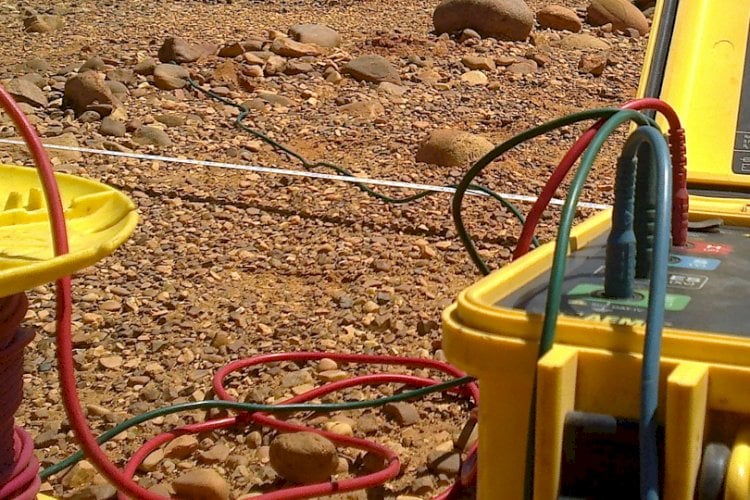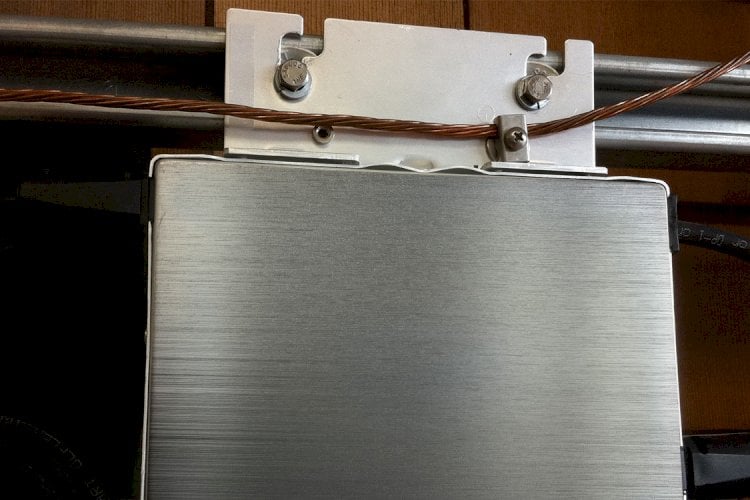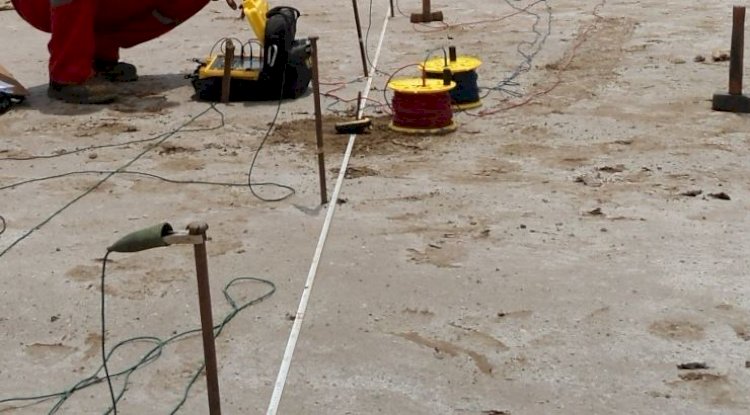The measurement of ground resistance for an earth electrode system is very important. It should be done when the electrode is first installed, and then at periodic intervals thereafter. This ensures that the resistance-to-ground does not increase over time. There are two (2) methods for testing an electrical grounding system. The first is the 3-point or Fall-of- Potential method and the second is the Induced Frequency test or clamp-on method. The 3-point test requires complete isolation from the power utility. Not just power isolation, but also removal of any neutral or other such ground connections extending outside the grounding system. This test is the most suitable test for large grounding systems and is also suitable for small electrodes. The induced frequency test can be performed while power is on and actually requires the utility to be connected to the grounding system under test. This test is accurate only for small electrodes, as it uses frequencies in the kiloHertz range, which see long conductors as inductive chokes and therefore do not reflect the 60 Hz resistance of the entire grounding system.
Fall-of-Potential Method or 3-Point Test
The 3-point or fall-of-potential method is used to measure the resistance-to-ground of existing grounding systems. The two primary requirements to successfully complete this test are the ability to isolate the grounding system from the utility neutral and knowledge of the diagonal length of the grounding system (i.e. a 10’ x 10’ grounding ring would have a 14’ diagonal length). In this test, a short probe, referred to as probe Z, is driven into the earth at a distance of ten times (10X) the diagonal length of the grounding system (rod X). A second probe (Y) is placed in-line at a distance from rod X equal to the diagonal length of the grounding system.
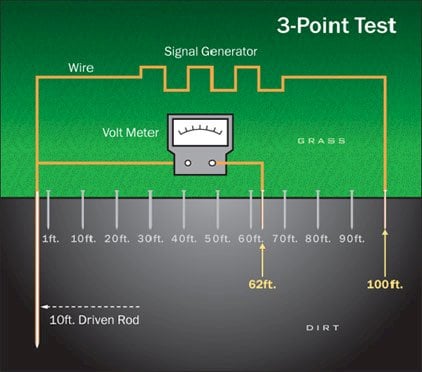
At this point, a known current is applied across X & Z, while the resulting voltage is measured across X & Y. Ohm’s Law can then be applied (R=V/I) to calculate the measured resistance. Probe Y is then moved out to a distance of 2X the diagonal length of the grounding system, in-line with X & Z, to repeat the resistance measurement at the new interval. This will continue, moving probe Y out to 3X, 4X, … 9X the diagonal length to complete the 3–point test with a total of nine (9) resistance measurements.
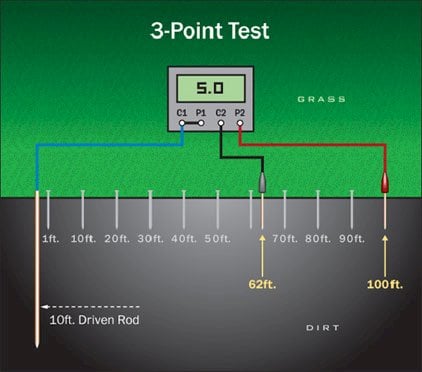
Graphing & Evaluation
The 3-point test is evaluated by plotting the results as data points with the distance from rod X along the X-axis and the resistance measurements along the Y-axis to develop a curve. Roughly midway between the center of the electrode under test and the probe Z, a plateau or “flat spot” should be found, as shown in the graph. The resistance of this plateau (actually, the resistance measured at the location 62% from the center of the electrode under test, if the soil is perfectly homogeneous) is the resistance-to-ground of the tested grounding system.
Invalid Tests
If no semblance of a plateau is found and the graph is observed to rise steadily the test is considered invalid. This can be due to the fact that probe Z was not placed far enough away from rod X, and can usually indicate that the diagonal length of the grounding system was not determined correctly. If the graph is observed to have a low plateau that extends the entire length and only rises at the last test point, then this also may be also considered invalid. This is because the utility or telecom neutral connection remains on the grounding system.
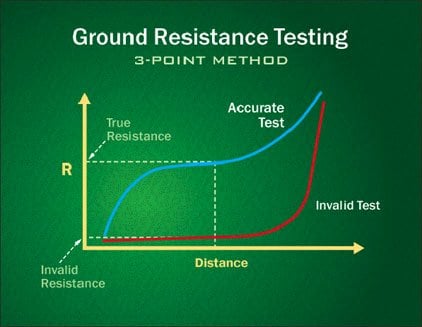
Induced Frequency Testing or Clamp-On Testing
The Induced Frequency testing or commonly called the “Clamp-On” test is one of the newest test methods for measuring the resistance-to-ground of a grounding system or electrode. This test uses a special transformer to induce an oscillating voltage (often 1.7 kHz) into the grounding system. Unlike the 3-point Test which requires the grounding system to be completely disconnected and isolated before testing, this method requires that the grounding system under test be connected to the electric utilities (or other large grounding system such as from the telephone company) grounding system (typically via the neutral return wire) to provide the return path for the signal. This test is the only test that can be used on live or ‘hot” systems. However, there are some limitations, primarily being:
- The amount of amperage running through the tested system must be below the equipment manufacturer’s limits.
- The test signal must be injected at the proper location, so that the signal is forced through the grounding system and into the earth.
- This instrument actually measures the sum of the resistance of the grounding system under test and the impedance of the utility neutral grounding, including the neutral wiring. Due to the high frequency used, the impedance of the neutral wiring is non-negligible and can be greater than the ground resistance of a very low resistance grounding system, which can therefore not be measured accurately.
- The ground resistance of a large grounding system at 60 Hz can be significantly lower than at 1.7 kHz.
Many erroneous tests have been conducted where the technician only measured metallic loops and not the true resistance-to-ground of the grounding system. The veracity of the Induced Frequency Test has been questioned due to testing errors, however when properly applied to a small to medium sized, self-standing grounding system, this test is rapid and reasonably accurate.
Test Application
The proper use of this test method requires the utility neutral to be connected to a wye-type transformer. The oscillating voltage is induced into the grounding system at a point where it will be forced into the soil and return through the utility neutral. Extreme caution must be taken at this point as erroneous readings and mistakes are often made. The most common of these occur when clamping on or inducing the oscillating voltage into the grounding system at a point where a continuous metallic path exists back to the point of the test. This can result in a continuity test being performed rather than a ground resistance test.
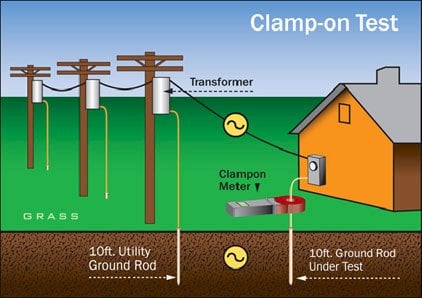
Understanding the proper field application of this test is vital to obtaining accurate results. The induced frequency test can test grounding systems that are in use and does not require the interruption of service to take measurements.
Ground Resistance Monitoring
Ground resistance monitoring is the process of automated timed and/or continuous resistance-to ground measurement. These dedicated systems use the induced frequency test method to continuously monitor the performance of critical grounding systems. Some models may also provide automated data reporting. These new meters can measure resistance-to-ground and the current that flows on the grounding systems that are in use. Another benefit is that it does not require interruption of the electrical service to take these measurements.
Let's Talk! Schedule a FREE Phone Consultation Today.
Wherever you're located, learn how good a fit we are for your project.

